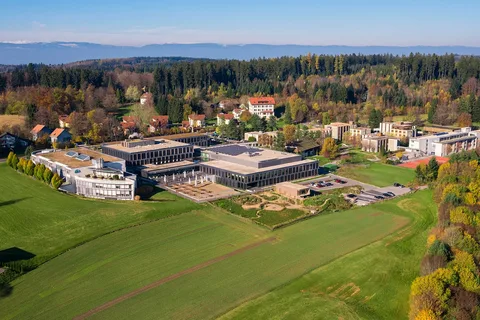Table of Contents
introduction
An interchange map is an essential tool for anyone traveling on highways or busy roads, as it helps you navigate complex road systems by showing how different roads and highways connect. Whether you’re on a long road trip or just trying to get through a busy city, an interchange map can guide you to your destination safely and efficiently. It highlights key interchanges, exits, and ramps, allowing you to make decisions ahead of time, so you don’t get stuck in traffic or miss an important turn. With a clear and easy-to-read map, your travels become more predictable, saving you time and reducing stress on the road.
What is an Interchange Map and How Does It Work?
An interchange map is a special kind of map that helps drivers understand where different roads meet. These maps show you how highways and local roads connect to one another. By looking at an interchange map, you can plan your journey better, avoid getting stuck in traffic, and find the best way to reach your destination.
Most interchange maps show important details like exits, ramps, and road splits. These are places where roads join or split, so it’s important to know where they are. If you’re traveling in a busy city or on a big highway, an interchange map can guide you through these busy spots and help you avoid confusion.
Why You Need an Interchange Map for Safe Traveling
When you’re on the road, safety should always come first. Using an interchange map makes your journey safer because it helps you stay on the right path. Instead of guessing where to turn or which exit to take, you can follow a clear plan. This can reduce stress and keep you focused on driving safely.
An interchange map helps you avoid making last-minute decisions, like rushing to take an exit you missed. It shows all the interchanges ahead of time, so you know exactly when to exit and which lane to be in. This is especially helpful when you’re traveling on unfamiliar roads or in areas with lots of exits and intersections.
How to Read an Interchange Map Effectively
Reading an interchange map is easy once you understand its symbols. Most interchange maps use simple colors, lines, and shapes to show you what’s happening on the road. The main highways are usually drawn as bold lines, and the exits or ramps are marked with arrows.
Look for road signs and labels that help you identify important landmarks. Exit numbers, road names, and distances are also shown. Some maps even use different colors to show faster or slower roads, so you can choose the quickest route. By taking your time to study the map before you drive, you’ll be more confident when you’re out on the road.
Key Features to Look for in an Interchange Map
When you’re choosing an interchange map, there are a few key features to keep in mind. First, check for clear labeling of road names, exits, and interchanges. The map should be easy to read, with large fonts and simple lines. It’s also important to look for the scale of the map, which tells you how much area the map covers.
Another important feature is the level of detail. If you’re traveling through a large city, the map should show more information about smaller streets, local highways, and interchanges. This will help you find your way even in crowded areas.
The Role of Interchange Maps in Urban Planning
Interchange maps are also important for city planners. They help planners design roads, highways, and intersections that are easy to navigate. A good interchange map can make traffic flow better and reduce accidents by showing drivers where to expect exits and merges.
Urban planning involves thinking ahead about how roads will connect in the future. By using an interchange map, city planners can figure out where new exits should be built or where roads might need to be widened to handle more cars.
Interchange Map vs. Regular Road Maps: What’s the Difference?
While both an interchange map and a regular road map show roads and highways, there are some key differences. A regular road map shows a broad view of the area and is useful for general navigation. It might include small towns, rural areas, and scenic routes. On the other hand, an interchange map is more detailed and focuses on the areas where roads connect.
The main difference is that interchange maps are designed to help drivers navigate complex highway systems, especially when traveling through busy interchanges. Regular road maps might not have the detailed information you need to navigate these areas safely.
How Interchange Maps Help Reduce Traffic Congestion
Interchange maps play a big role in reducing traffic congestion, especially in busy cities. By helping drivers know where to exit or merge, these maps can reduce last-minute lane changes and accidents. When drivers can plan their route ahead of time, they avoid blocking lanes and causing traffic jams.
Maps also help drivers avoid getting stuck in slow-moving traffic by showing alternate routes. In big cities, the roads can become crowded, but with an interchange map, you can find less busy paths to take, making your journey smoother.

Benefits of Using an Interchange Map for Long-Distance Travel
If you’re going on a long road trip, having an interchange map can make the trip easier and more enjoyable. Instead of worrying about getting lost in unknown areas, you’ll have a guide to help you find your way. An interchange map can show you where to stop for gas, food, or rest breaks, as well as highlight interesting places along the route.
For long-distance travelers, planning ahead with an interchange map also means less stress. You’ll be able to avoid heavy traffic, construction zones, and confusing intersections. With everything planned out, you can enjoy your trip without worrying about directions.
The Evolution of Interchange Maps in the Digital Age
In the past, people had to rely on paper maps to find their way around. However, with technology advancing, digital maps have taken over. Today, you can use your phone or GPS to access interchange maps in real-time, helping you find the best route wherever you are.
These digital maps are more accurate and up-to-date than paper maps. They can give you live traffic updates, tell you about road closures, and even suggest faster routes if there’s an accident ahead. The digital age has made using an interchange map more convenient than ever before.
How to Find the Best Interchange Map for Your Journey
Not all interchange maps are the same. Some are printed maps, while others are available online or in apps. If you’re planning a trip, make sure to choose a map that fits your needs. Look for a map that covers the areas you’ll be traveling through and one that’s easy to read.
If you’re using a digital map, make sure it updates regularly so you have the most current information. Check out online map tools or apps like Google Maps that allow you to plan your route, see real-time traffic, and get step-by-step directions.
Tips for Navigating Complex Interchanges with a Map
Some interchanges can be really confusing, especially if there are many roads joining together. The best way to handle these complex interchanges is to study your interchange map carefully before you start driving. Take note of the road signs and exit numbers so you know exactly where to go.
If you’re using a digital map, it will guide you with turn-by-turn instructions, but it’s still helpful to have a printed version of the map for backup. Remember to stay calm and take your time, especially when approaching tricky interchanges.
Future Trends in Interchange Maps and Transportation
As technology continues to improve, so will interchange maps. Future maps may use 3D visuals or augmented reality to help drivers navigate more easily. With new advancements, these maps might even provide real-time suggestions for the best lanes to take, or help drivers avoid construction zones and accidents.
In the future, we might even see maps that are integrated with smart cars, giving drivers live updates and guidance as they drive. Interchange maps will continue to evolve, making travel safer and more convenient for everyone.
In conclusion, an interchange map is a very helpful tool for anyone who drives on highways or busy roads. It helps you plan your route by showing where different roads connect, so you don’t get lost. Using an interchange map can save you time and make your trip safer by guiding you through complicated intersections and exits. Whether you’re traveling near home or on a long road trip, having a good map can make your journey easier and more enjoyable.
So, next time you plan a trip, remember to check out an interchange map before hitting the road. It can help you find the best route, avoid traffic, and ensure you stay on the right path. With the help of a clear and simple map, you’ll be able to enjoy your travels with less stress and more confidence. Safe travels!
conclusion:
In conclusion, an interchange map is a very helpful tool for anyone who drives on highways or busy roads. It helps you plan your route by showing where different roads connect, so you don’t get lost. Using an interchange map can save you time and make your trip safer by guiding you through complicated intersections and exits. Whether you’re traveling near home or on a long road trip, having a good map can make your journey easier and more enjoyable.
So, next time you plan a trip, remember to check out an interchange map before hitting the road. It can help you find the best route, avoid traffic, and ensure you stay on the right path. With the help of a clear and simple map, you’ll be able to enjoy your travels with less stress and more confidence. Safe travels!















Leave a Reply